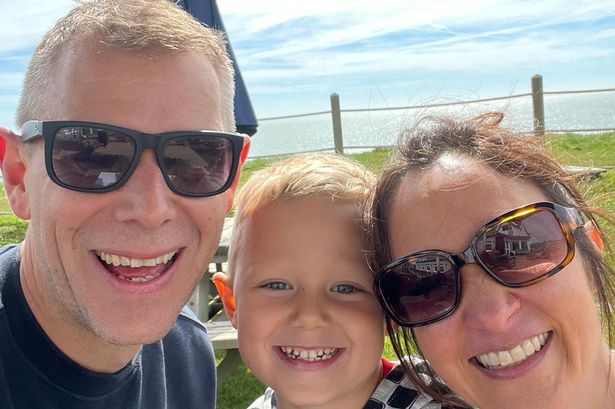Six-year-old Jimmy Cragg’s life took an unexpected turn just before Christmas when his parents, Wendy and Will, noticed a concerning lump on his neck. Accompanying this physical anomaly were a series of flu-like symptoms, raising concerns about his health. A visit to the doctor quickly led to a devastating diagnosis: Jimmy had acute lymphoblastic leukaemia (ALL), the most common type of childhood cancer. ALL is a cancer of the blood and bone marrow, where immature white blood cells, called lymphoblasts, proliferate uncontrollably, crowding out healthy blood cells. This disruption impairs the body’s ability to fight infection and carry oxygen. The diagnosis marked the beginning of a challenging journey for Jimmy and his family, a path fraught with intense treatments, emotional ups and downs, and the uncertainty that comes with battling a serious illness.
The initial shock and grief of Jimmy’s diagnosis were overwhelming for Wendy and Will. The vibrant and energetic child they knew was suddenly facing a life-threatening disease, a reality that was difficult to comprehend. However, amidst their despair, they found strength in their determination to fight for their son’s health. They quickly learned about the intensive treatment regimen that awaited Jimmy, a protocol involving chemotherapy, steroids, and potentially other interventions such as bone marrow transplants. The treatment plan aimed to eradicate the leukemic cells and restore Jimmy’s bone marrow to its normal function. The family rallied together, drawing on their support network of friends, family, and the medical team at the hospital. They learned the language of oncology, understanding the complexities of blood counts, chemotherapy protocols, and the potential side effects Jimmy might experience.
Jimmy’s treatment journey began with an induction phase of chemotherapy, an intense period designed to quickly kill off a significant portion of the leukemic cells. This phase typically lasts for several weeks and often requires hospitalization. The goal is to achieve remission, a state where the number of leukemic cells is significantly reduced, and the bone marrow begins to produce healthy blood cells again. While this initial phase offers hope, it also comes with significant side effects, including nausea, vomiting, hair loss, and susceptibility to infections. Jimmy’s resilience and positive spirit shone through even during these difficult times. He bravely endured the treatments, finding comfort in his family’s unwavering support, the kindness of the hospital staff, and the distractions of play and storytelling.
Following the induction phase, Jimmy entered the consolidation phase, which aims to further eliminate any remaining leukemic cells and prevent relapse. This phase usually involves several months of chemotherapy, often administered in cycles. The intensity of the treatment is gradually reduced, but vigilance remains crucial. Regular blood tests and bone marrow biopsies are performed to monitor Jimmy’s progress and ensure the effectiveness of the treatment. Throughout the consolidation phase, Jimmy continued to face challenges, experiencing periods of fatigue, discomfort, and the emotional toll of battling a prolonged illness. However, he continued to find joy in the small things, celebrating milestones, and drawing strength from the love and support surrounding him.
The maintenance phase of treatment is the final and longest stage, lasting for several years. During this phase, Jimmy received lower doses of chemotherapy to prevent the re-emergence of leukemic cells. The goal is to maintain remission and allow his body to fully recover. While the intensity of treatment decreased, regular check-ups and monitoring remained essential. This period allowed Jimmy to gradually return to a more normal life, regaining his strength, attending school, and reconnecting with friends. The maintenance phase marked a gradual return to normalcy, but it also served as a constant reminder of the ongoing battle against the disease.
Jimmy’s journey with leukaemia has been a testament to his resilience, the unwavering support of his family, and the advancements in medical treatment. His story underscores the importance of early detection and the power of hope in the face of adversity. While the path has been challenging, Jimmy’s strength, courage, and positive spirit have inspired those around him. His story serves as a reminder of the importance of research and funding for childhood cancers, offering hope for a brighter future for children diagnosed with leukaemia and other life-threatening diseases. The Cragg family’s experience highlights the profound impact of childhood cancer, not only on the child but on the entire family, emphasizing the need for comprehensive support systems that address the medical, emotional, and social challenges they face.














